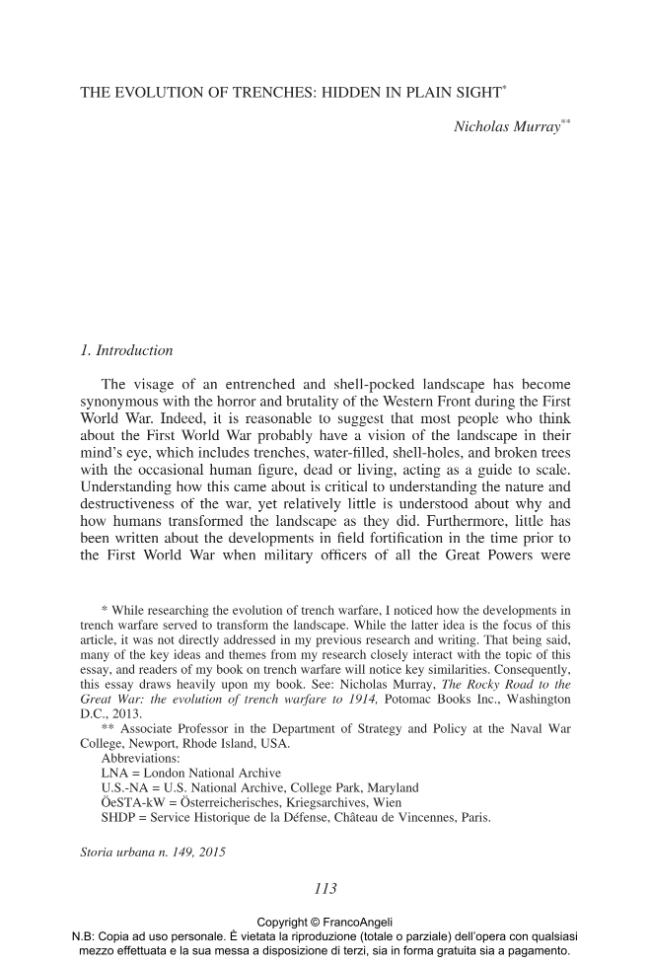The evolution of trenches : hidden in plain sight
113-138 p.
The story of how the evolution of trenches transformed the landscape and why soldiers utilized them has, by in large, been neglected. Yet, it is a story that is critical to understand why the battlefields of Western Europe in World War One looked the way they did: barren moonscapes covered in scars with millions of men hiding in plain sight. This essay examines the evolution of modern field fortifications from the aboveground breastworks of the mid-nineteenth century to the belowground trenches of the First World War. During that time, the technology of killing (particularly that of machine guns and artillery) became much more powerful and this development forced armies to change the way they physically protected their soldiers. The use of trenches and concealment were a direct response to the increase in battlefield lethality. The move below ground, both to protect and conceal the soldiers, required an enormous increase in both the quantity and weight of offensive firepower in order to deal with it. That is,
armies needed vast numbers of artillery shells, particularly heavy ones, to force men from their positions or to kill them. In turn, this physically tore up the landscape and created the visage that is all too familiar to us today. Furthermore, and unlike most previous wars, the landscape was often permanently changed.
La storia di come l'evoluzione delle trincee trasformarono il paesaggio e del perché i militari le utilizzassero così tanto, è stata trascurata, tuttavia è essenziale per capire le ragioni per le quali i campi di battaglia dell'Europa occidentale durante la Prima guerra mondiale avessero quell'aspetto: brulli paesaggi lunari ricoperti da milioni di uomini che si nascondevano in bella vista. Questo saggio esamina l'evoluzione dei sistemi difensivi, dalle opere campali fuori terra della seconda metà del XIX secolo fino alle trincee interrate della Grande guerra. Durante questo periodo, la tecnologia delle armi da fuoco (in particolare le mitragliatrici e l'artiglieria) divenne molto più potente e il suo sviluppo costrinse gli eserciti a cambiare il modo di proteggere i loro soldati. L'uso di trincee e nascondigli costituiva la naturale risposta all'aumento di mortalità nei campi di battaglia. Lo spostamento sotto terra, sia per proteggere che per nascondere i soldati, richiese un enorme aumento delle quantità e
del peso delle armi da fuoco. Gli eserciti ebbero bisogno di grandi quantità di proiettili, soprattutto quelli pesanti, per stanare gli uomini dalle loro posizioni o per ucciderli. Di conseguenza, il paesaggio era ridotto a brandelli, conferendogli l'aspetto che oggi ci è fin troppo familiare. Inoltre, diversamente dalle precedenti guerre, spesso il paesaggio era trasformato in maniera irreversibile.
Forma parte de
Storia urbana : rivista di studi sulle trasformazioni della città e del territorio in età moderna : 149, 1, 2016-
Artículos del mismo número (disponibles individualmente)
-
Información
Código DOI: 10.3280/SU2015-149005
ISSN: 1972-5523
KEYWORDS
- Trincea Opere campali Ridotta Paesaggio
- Trench Breastworks Redoubt Landscape



